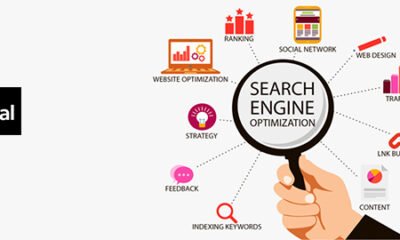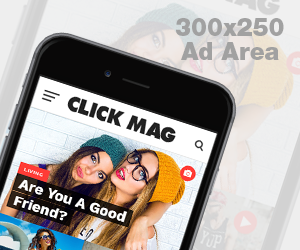Advertising & Marketing
The Beginner’s Guide to Branding
There is a lot of information out there on branding, but it can be hard to make sense of what you need to do first. That’s why we created this guide for beginners! In this blog post, we will cover the basics of branding and give some great tips for those just starting out.
A strong brand is one of the most important parts of any business. A well-branded company can attract more customers, create a loyal customer base, and make it easier to stand out from competitors. It’s also much easier for people to remember your company when they see your logo or hear your name because you are creating an identity that is unique in the marketplace.
In this blog post, we will explore what branding is and why it’s so important for businesses of all sizes. We’ll also provide some tips on how you can start branding yourself or your company today!
What is Branding?
The history of brands actually started with ancient tribes who used to burn marks as identification systems on their products. In fact, “brand” is an Old Norse word that means “to burn,” – a practice where producers burn their mark onto their products.
Today, branding is used to describe the entire identity of a company. It’s how consumers recognize your business and it can include many different elements, including your logo, name, tagline, colors and more.
It’s important to note that branding is not simply advertising or marketing your business, although those things certainly fall under the umbrella of branding. Instead, it’s about creating a consistent image for your company and then projecting this identity out into the world so people can identify you as an organization. The more familiar they become with your company and its products or services, the more likely they are to choose you over a competitor.
Why is Branding Important?
Creating a powerful brand can help you achieve many things as an organization – it’s one of the most vital components of any type of business strategy.
A strong brand attracts customers: If people know who you are and what you do, they are more likely to choose your company over a competitor’s. That means that branding can be incredibly useful for small businesses that don’t have the budget of larger companies.
It also helps them develop an instantly recognizable identity in their market, which can keep customers coming back time and time again.
Building customer loyalty through strong branding is also important for mid-sized and large businesses that want to maximize their profits.
Branding can help you stand out from competitors, establish relationships with customers, build your reputation in the industry, encourage repeat business through referrals – all of these things are invaluable assets when it comes to increasing sales over time.
With so many benefits associated with strong branding, it’s no wonder that so many companies do everything they can to create a strong brand identity.
Let’s explore some of the ways you can start branding your business today!
How Can I Start Branding My Business?
There are several steps involved in creating and implementing an effective branding strategy for your company, but don’t let them intimidate you because they are easier than you think.
Research Your Audience
Before you start spending money on marketing materials or hiring a designer, it’s important to do some research so that your branding is targeted toward the right audience.
The more you know about your target demographic, the better equipped you will be to create a brand that speaks directly to them and attracts their interest.
This means knowing what they want from products or services like yours , which includes understanding their overall demographics (age, gender etc.), psychographics (lifestyle), behavior patterns – when, how and why they use the things that your company sells, and what you can do to appeal specifically to them.
It’s also important to understand their expectations when it comes time for purchase decisions so that you don’t disappoint customers by having unrealistic goals or confusing messaging in your branding efforts.
The more information you have about who your audience is and how they think, the easier it will be to create a brand that they can relate to and feel confident in.
Define Your Brand Identity
Your brand identity is everything that people associate with your business, including colors, fonts, logos, taglines, images etc.
It’s important to make sure that everything you use is cohesive and represents your business accurately so pay close attention to the following elements:
Values and personality
When people think about your company, what first comes to mind? What feelings do you want them to associate with your brand? What are the qualities of your company that define the way you approach business and your relationships with customers?
Key messages
You need to be able to communicate these elements through your brand and that means having a clear idea of what you want people to know about who you are, what you sell, and what you want them to believe about your company.
Brand story
This is the narrative that tells people who you are as a company and why you exist, so spend some time creating a compelling story that will capture people’s attention.
Design
Your brand identity should be cohesive and instantly recognizable, which means that the colors you use should match your logo and any other images or graphics you incorporate into it.
Logo
A logo is a critical element of branding and it can include many different elements, including your logo, name, tagline, colors and more.
When you’re ready to put everything together, make sure that it looks good on all of the marketing materials and products your company uses.
Remember that these elements should stay consistent so you can maintain a cohesive brand identity.
Fine-tune Your Brand Voice
Once you’ve created your brand identity, it’s time to decide how you’re going to communicate with customers.
It’s important to stay on topic and maintain your brand voice, which means knowing what type of information you want to share with customers and how you’ll accomplish that goal through the tone of your writing (casual, formal etc.).
This might take some testing before you know exactly what works best for your company so make sure that you’re open to revising your brand voice if needed.
Remember the purpose of branding is to create a connection with customers and keep them coming back for more, which means sharing information on topics they want to know about using language they can relate to so this should be simple enough once you get started.
Build an Online Presence
When people think about your brand, the first place they’ll turn is to online resources like your website and social media profiles so you need to make sure that these elements are well-rounded and clearly represent who you are as a company.
Your logo and branding should be consistent across all of these channels (mobile sites included) but keep in mind that your website is the most important since it’s where people will expect to find out more about who you are and what you do.
Your social media profiles should be linked from your site so they’re easy for customers to access but make sure that all of these elements clearly represent your brand identity, especially if there are images or colors associated with your brand.
Building an online presence for your company is one of the most important parts of branding so it’s worth taking some time to get this right since you’ll be using these profiles frequently throughout the life of your business.
Promote Your Brand
Once you’ve created your brand identity and online presence, it’s time to get the word out.
Your customers won’t be able to see or interact with your branding unless they know what it is so make sure that you’re promoting these elements through all of your marketing materials (including social media profiles).
You should also use these same resources to promote your brand and keep customers coming back for more, which means sharing regular updates about what’s going on with your company so they always know that you’re around.
Using “User generated content” – which is a catchphrase for when your customers share their experiences with you – is a great way to promote your brand since it’s authentic and shows people that others are talking about the wonderful things they’re doing.
Your main goal is to build a connection with people who might be interested in doing business with you at some point so don’t forget to stay consistent and share something new every time you publish a post.
Remain Persistent
Keep in mind that building your brand takes time and persistence so don’t be afraid to keep at it even if you’re not seeing the results right away.
It’s also important to remember why branding is so critical for business success since this will help guide your decisions along the way, which should make things easier when trying to create a new look for your company.
Remember that branding is the foundation of every successful business so it’s always worth investing time into making sure that you’re doing this right to achieve long term results, which should ultimately lead to more customers and a larger profit margin over time.


















